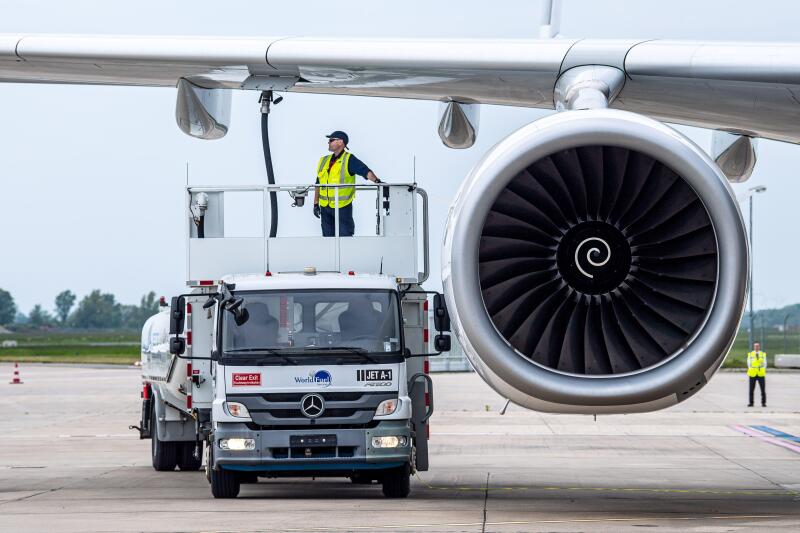
Have you ever wondered what color airplane fuel is? Whether you’re a curious traveler or an aviation enthusiast, understanding the different types of airplane fuel and their colors can be fascinating. In this blog post, we’ll explore the various colors of airplane fuel, why some fuels are dyed specific colors, and the significance behind these choices. We’ll delve into the specifics of avgas and jet fuel, highlighting how these colors help in identifying different fuel types and ensuring aviation safety.
What is the Color of Airplane Fuel?
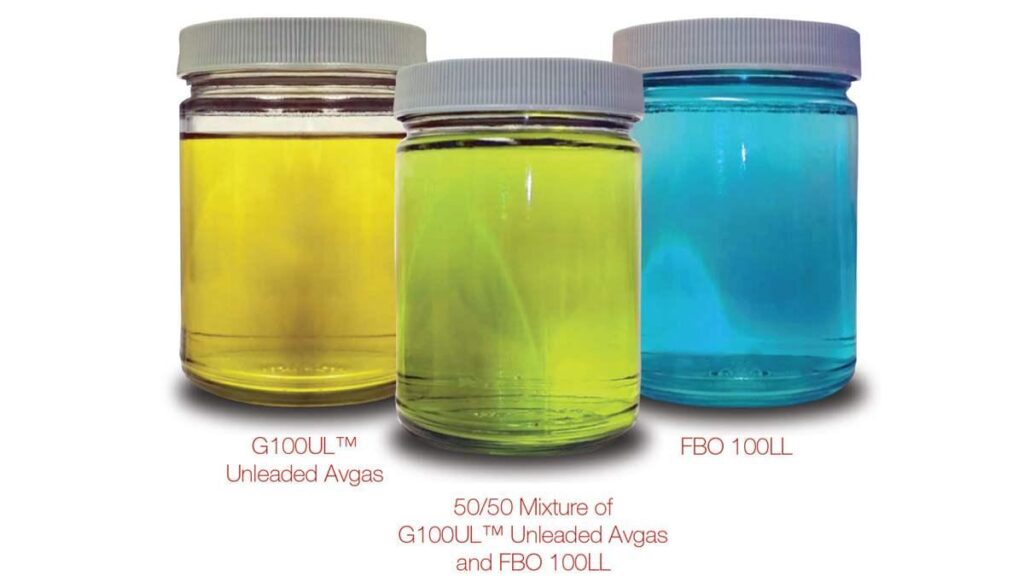
Airplane fuel comes in different colors depending on the specific type and grade. The color coding of aviation fuels serves an important purpose in identifying different grades and types, helping to prevent misfueling and ensure the correct fuel is used for each aircraft type.
Avgas (Aviation Gasoline)
- Avgas 100LL (Low Lead): Blue
- Avgas 80 (no longer widely available): Red
- Avgas 82UL (Unleaded): Purple
- Avgas 91/96UL (Unleaded): No color (clear)
- Avgas 100 (older version): Green
- Avgas 115 (mostly phased out): Purple
Jet Fuel
- Jet A and Jet A-1: Clear to straw-colored
These color distinctions are crucial for safety and proper aircraft operation. Using the wrong type of fuel can lead to serious engine problems or failure.
Why is Plane Fuel Blue?
The blue color of avgas, specifically 100LL, is due to the dye added to help identify it. This practice ensures that the correct fuel type is used for the aircraft, preventing potential engine damage or performance issues. The blue dye in 100LL avgas is an industry standard and helps ground crews and pilots quickly and easily identify the fuel.
What is the Colour of Fuel Used in Aeroplanes?
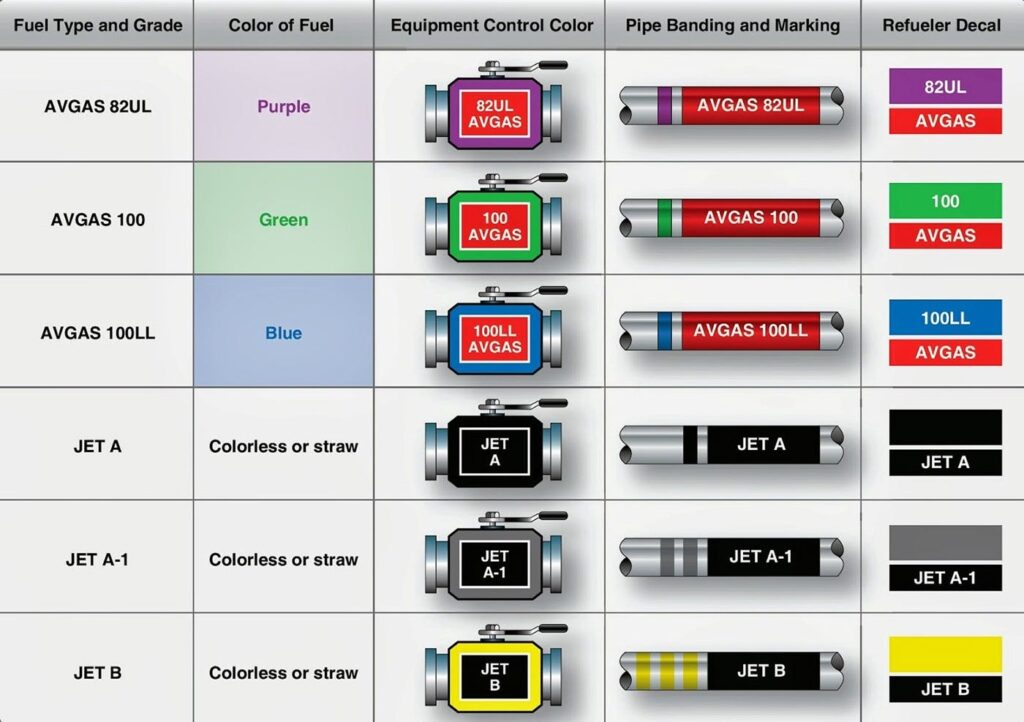
The color of fuel used in airplanes depends on the type of fuel:
Avgas
- Blue: 100LL (100 octane, low lead)
- Green: Avgas 100 (100 octane, higher lead content)
- Red: Avgas 80 (80 octane, no longer widely available)
- Purple: Avgas 82UL (82 octane, unleaded)
Jet Fuel
- Clear to straw-colored: Jet A and Jet A-1
Is Plane Fuel Red?
Yes, some types of plane fuel are red. Specifically, avgas 80/87 is dyed red. This helps distinguish it from other types of avgas and ensures that the correct fuel is used for the appropriate aircraft engines. The red color is a quick visual indicator for ground crews and pilots during refueling.
Detailed Breakdown of Aviation Fuel Colors
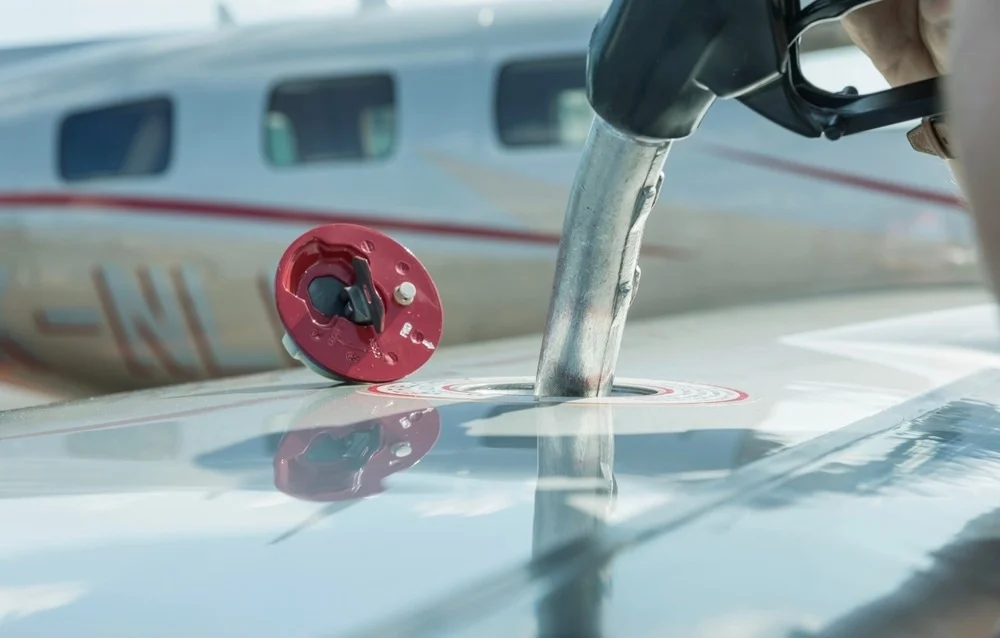
Identification and Safety
The primary purpose of color-coding avgas is to enable quick and easy identification of fuel types. This visual distinction helps prevent misfueling, which could lead to serious engine problems or failure. Pilots and ground crew can easily verify they are using the correct fuel type during pre-flight checks and refueling operations.
Octane Rating Indication
The colors often correspond to different octane ratings. For example:
- Blue: 100LL (100 octane, low lead)
- Green: Avgas 100 (100 octane, higher lead content)
- Red: Avgas 80 (80 octane, no longer widely available)
- Purple: Avgas 82UL (82 octane, unleaded)
Additive Content
The colors can also indicate the presence or absence of certain additives, particularly lead. For instance, the blue color of 100LL signifies it contains less lead than the green Avgas 100.
Regulatory Compliance
In many countries, fuel dyes are required by regulations to ensure proper identification and use. This standardization helps maintain safety across the aviation industry.
Historical Development
The color-coding system has evolved over time as new fuel formulations were introduced and others phased out. For example, Avgas 80 (red) and Avgas 115 (purple) are no longer in common use.
Quality Control
The distinct colors aid in quality control processes, making it easier to spot contamination or mixing of different fuel types.
Newer Unleaded Formulations
It’s worth noting that while most avgas types have specific colors, some newer unleaded formulations may be clear or have different colors. For example, 91/96UL is colorless. Additionally, jet fuels like Jet A and Jet A-1 are typically clear to straw-colored, distinguishing them from the more vividly colored avgas used in piston-engine aircraft.
The color-coding system for avgas is a crucial safety measure in aviation, helping to ensure that aircraft receive the correct fuel type for their engines, thereby preventing potential accidents or engine damage due to misfueling.
Conclusion
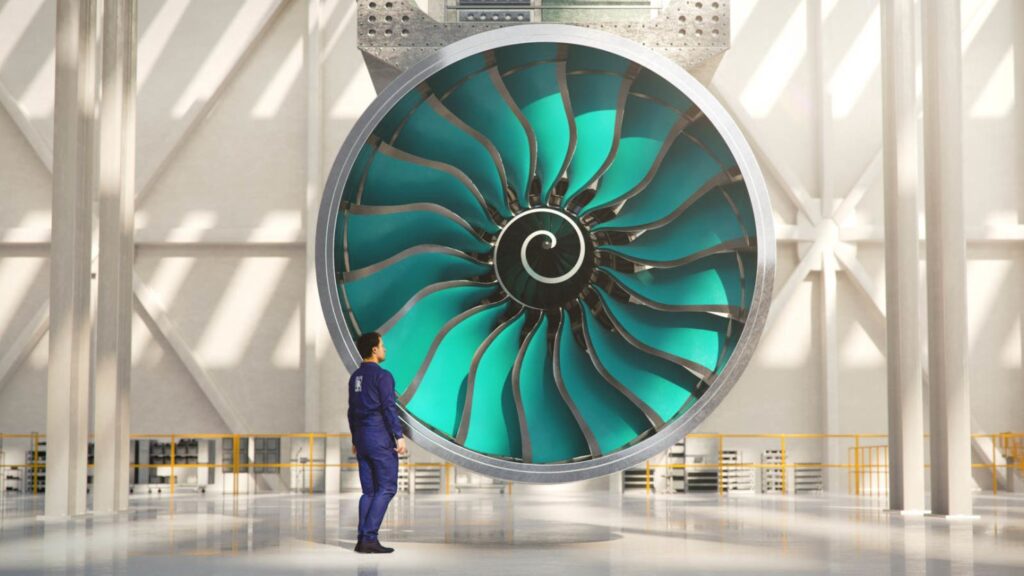
Understanding the color of airplane fuel is not just an interesting fact; it plays a crucial role in aviation safety and efficiency. The distinct colors of avgas help in the proper identification and use of the correct fuel types, ensuring the smooth operation of aircraft.
If you found this information interesting or useful, feel free to share it with your friends or fellow aviation enthusiasts. And next time you see an airplane being refueled, you’ll know exactly what those fuel colors mean!